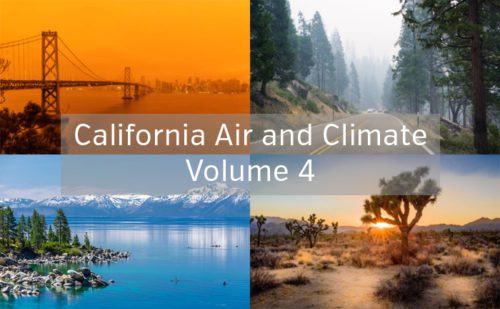California Air and Climate: CARB Cap-and-Trade Amendments and Methods to Reduce Transportation GHG; BAAQMD Seeking Comments to Implement BARCT; Air Permitting Restraints Facing Composting Industry
September 2018
California Air and Climate: Vol. 4
California Air Resources Board (CARB) Proposes Amendments to its Cap-and-Trade Program
On September 4, 2018, CARB proposed amendments to its greenhouse gas (“GHG”) cap-and-trade program to implement the changes required by AB 398, the 2017 legislation reauthorizing the program through 2030. Among the proposed changes, the amendments would: add a price ceiling and two price containment points, require at least half of offsets provide “direct environmental benefits to the state” and revise leakage assistance factors for allowance allocation. CARB is accepting comments through October 22 and will hold a public hearing to consider adoption of the regulations on October 25. The proposed regulations and other regulatory documents are available here.
CARB Explores Methods to Reduce Transportation Greenhouse Gas Emissions in Response to the Federal Rollback of Vehicle Emission Standards
On August 20, 2018, CARB held a workshop in Sacramento to discuss opportunities for additional GHG reductions from petroleum transportation fuels. The workshop is a result of CARB’s ongoing efforts to offset GHG and other emissions increases in the face of the Trump Administration’s rollback of vehicle emissions rules promulgated under the Obama Administration. According to CARB, although California remains on track to achieve California’s 2030 GHG targets, transportation sector GHG emissions have increased by four percent from 2014 to 2016, primarily due to increases in emissions from gasoline used in on-road vehicles. The workshop provided an opportunity for the public to learn more about CARB’s ongoing work to address GHG emissions in the transportation sector and provided a platform to discuss other potential opportunities for GHG reductions, including a proposal to phase out oil production in California, new vehicle and fuel taxes, as well as a ban on using certain types of vehicles. Next month, CARB plans to release a white paper summarizing the workshop and respond to public comments the agency received regarding this initial proposal.
BAAQMD Requests Comments on its Proposed Expedited Schedule to Implement BARCT at Industrial Sources
On September 5, 2018, the Bay Area Air Quality Management District (“BAAQMD”) released proposed Rule Development Project Scopes and an Initial Staff Report describing its plans to require Best Available Retrofit Control Technology (“BARCT”) for six industrial source categories. The proposed regulations are designed to meet the AB 617 requirement to implement BARCT at facilities subject to CARB’s cap-and-trade program. The proposed rules would require adoption of control technology to reduce emissions of oxides of nitrogen (“NOx”), reactive organic gases (“ROG”), particulate matter (“PM”), and sulfur dioxide (“SO2”) at the following sources: organic liquid storage tanks, petroleum wastewater treatment, refinery fluid catalytic crackers and CO boilers, refinery heavy liquid leaks, petroleum coke calcining, and Portland cement manufacturing. The deadline to submit comments to BAAQMD is October 5, 2018. The documents are available here.
California Agencies Consider Air Permitting Restraints Facing the Composting Industry
The California Air Resources Board, the California Air Pollution Control Officers Association, and the California Department of Resources Recycling and Recovery (“Agencies”) recently published a white paper examining air permitting challenges facing California’s compost industry as it seeks to expand to meet the state’s organic waste diversion goals. SB 1383, adopted in 2016, pursues reductions in emissions of methane (a GHG) from landfills by mandating an increase in diversion rates of organic waste. The legislation requires reductions of organic waste disposal at landfills by 50 percent by 2020 and 75 percent by 2025. The Agencies project that the state will need between 75 and 100 new or expanded composting and anaerobic digestion facilities to manage the diverted waste.
The white paper concludes that it is unlikely that there will be sufficient VOC emission reduction credits (“ERCs”) available, at least in the most populated air districts (e.g., South Coast Air Quality Management District, San Joaquin Valley Air Pollution Control District, Bay Area Air Quality Management District), to permit this increase in composting capacity. Adequate ERCs may be available if new facilities are sited outside of the populated air districts, however, increased emissions from trucking the waste to these locations may offset expected reductions in greenhouse gases from diverting the waste. The paper also discusses other steps to address the ERC shortage including additional research and testing to determine accurate VOC emission factors for composting and exploring the potential for generating ERCs at landfills based on expected decreases in VOC emissions from reducing organic waste disposal. Comments on the white paper are due September 24, 2018.

